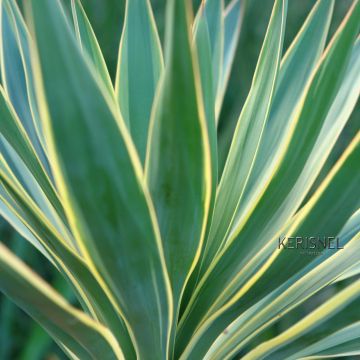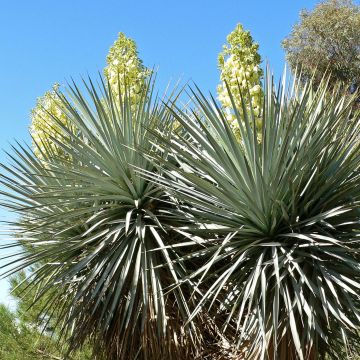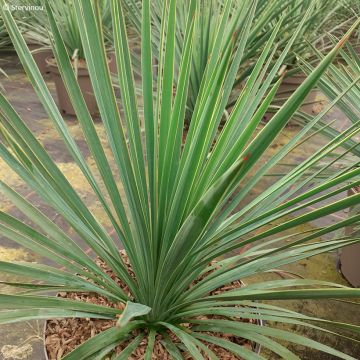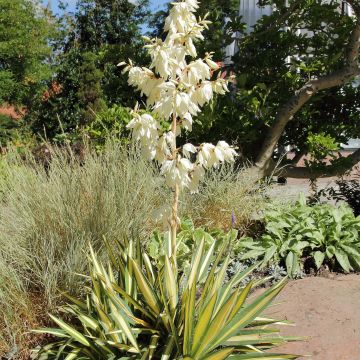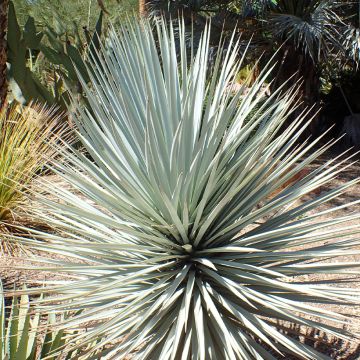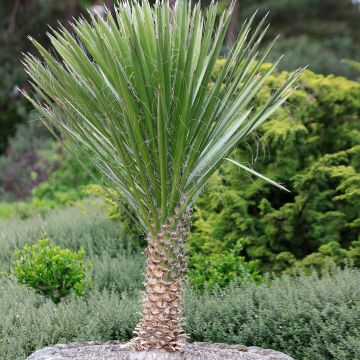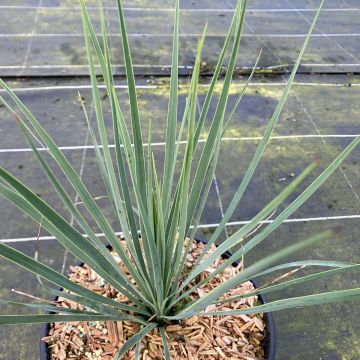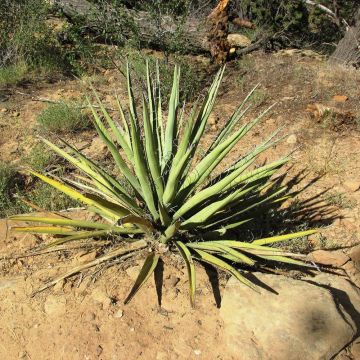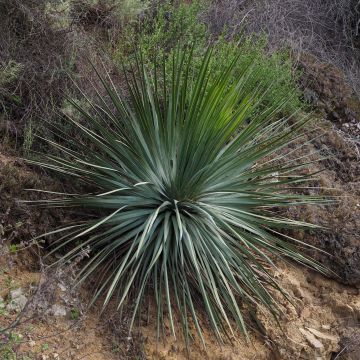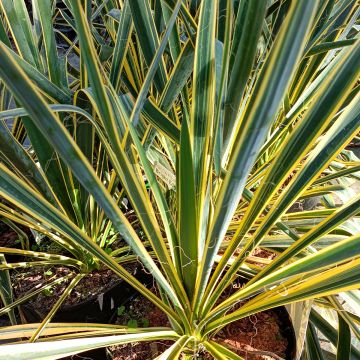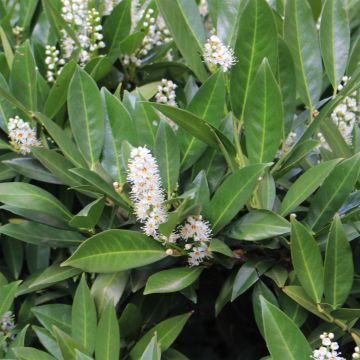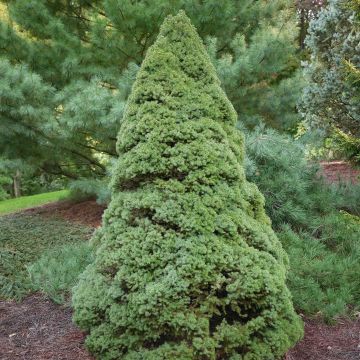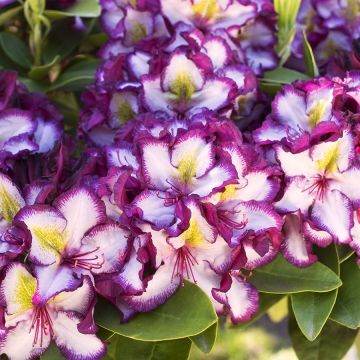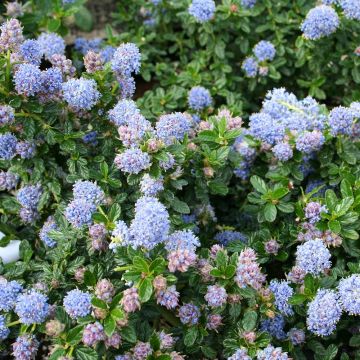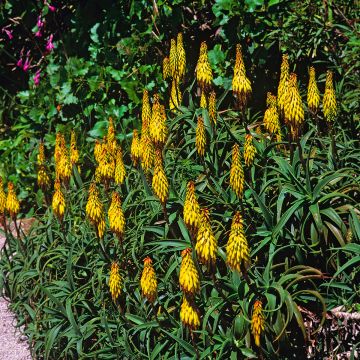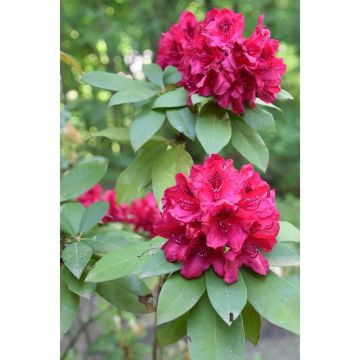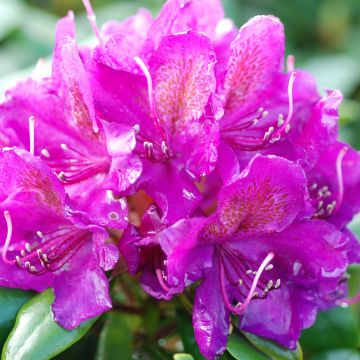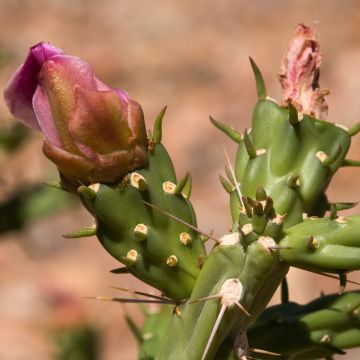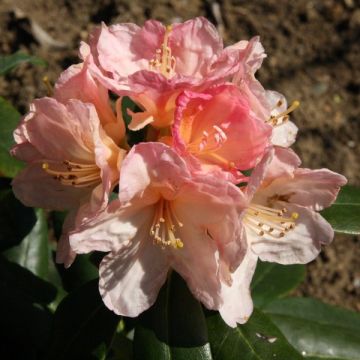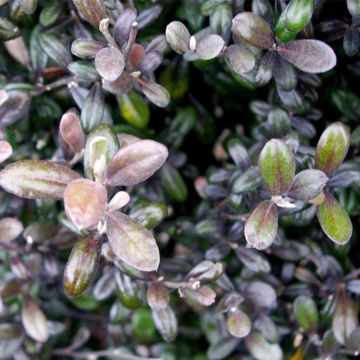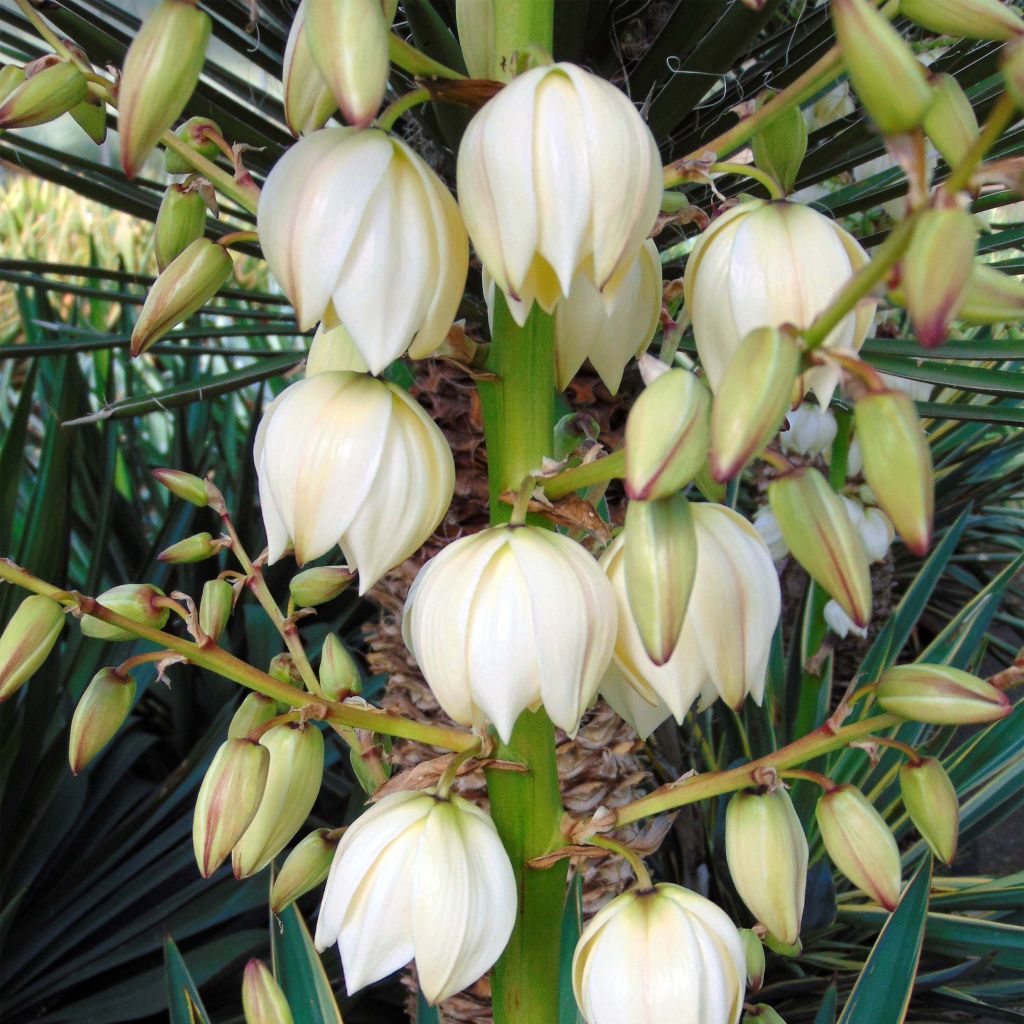

Yucca gloriosa - Spanish Dagger
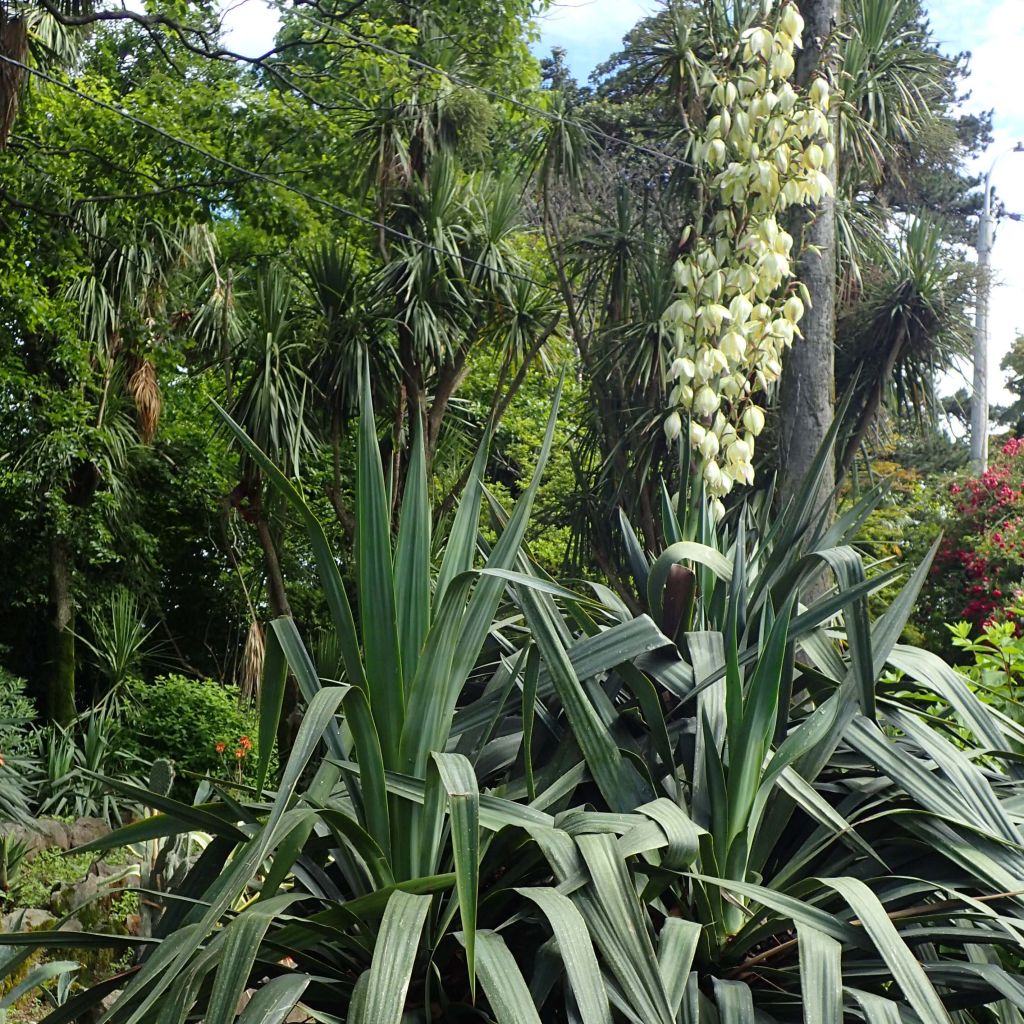

Yucca gloriosa - Spanish Dagger
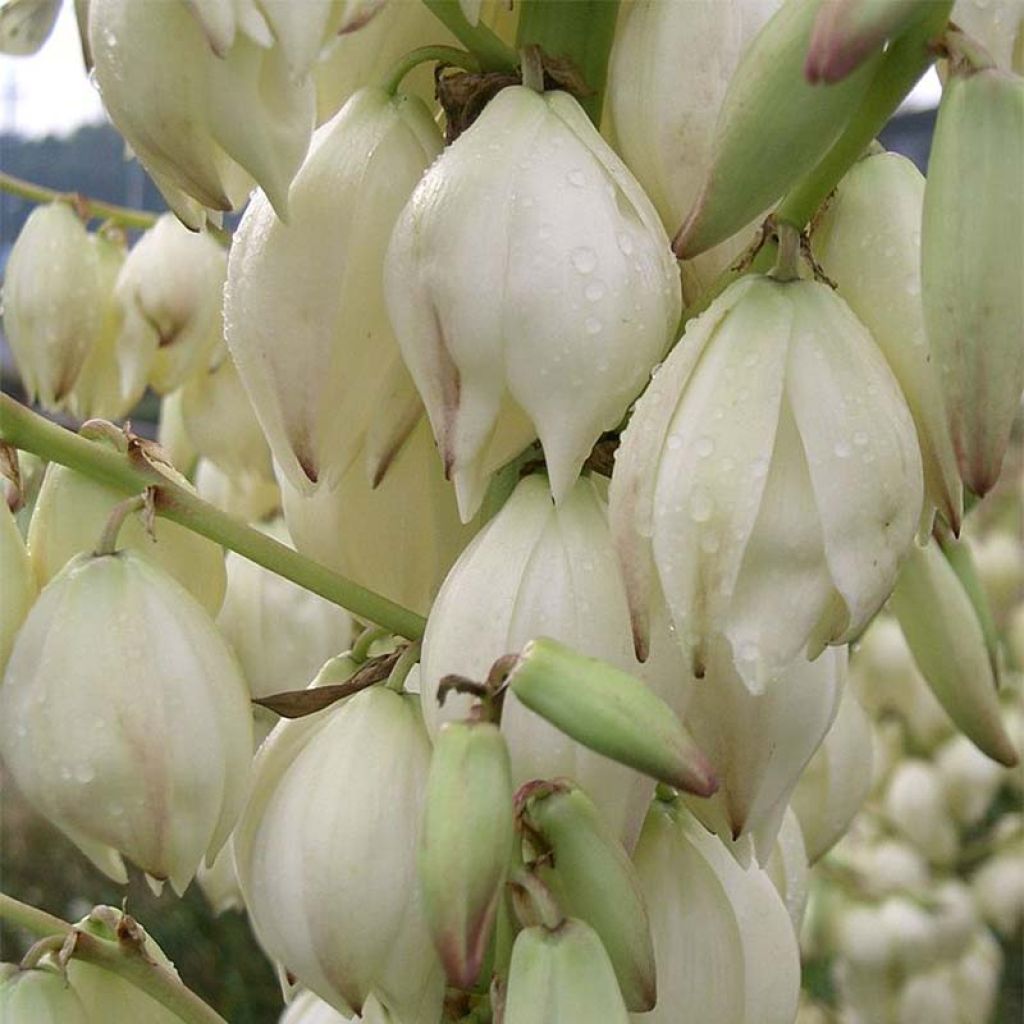

Yucca gloriosa - Spanish Dagger
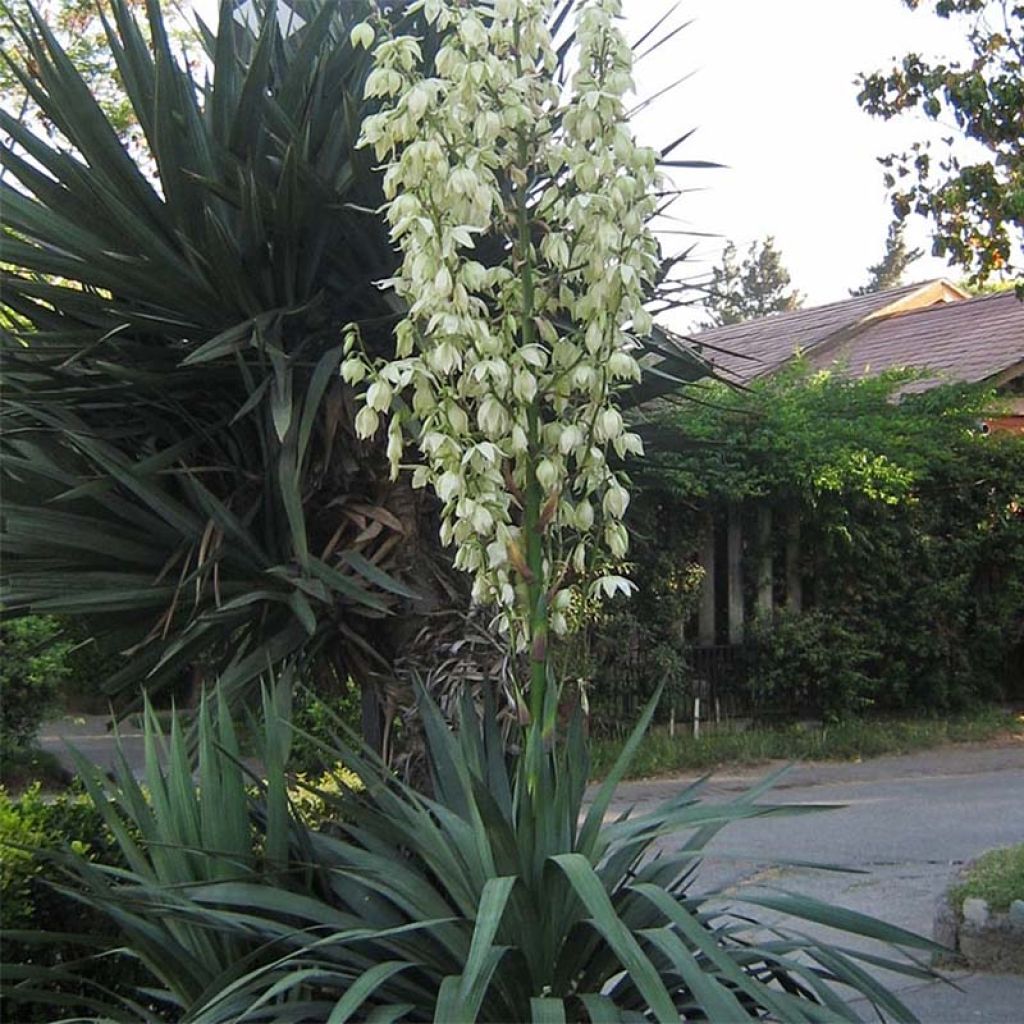

Yucca gloriosa - Spanish Dagger
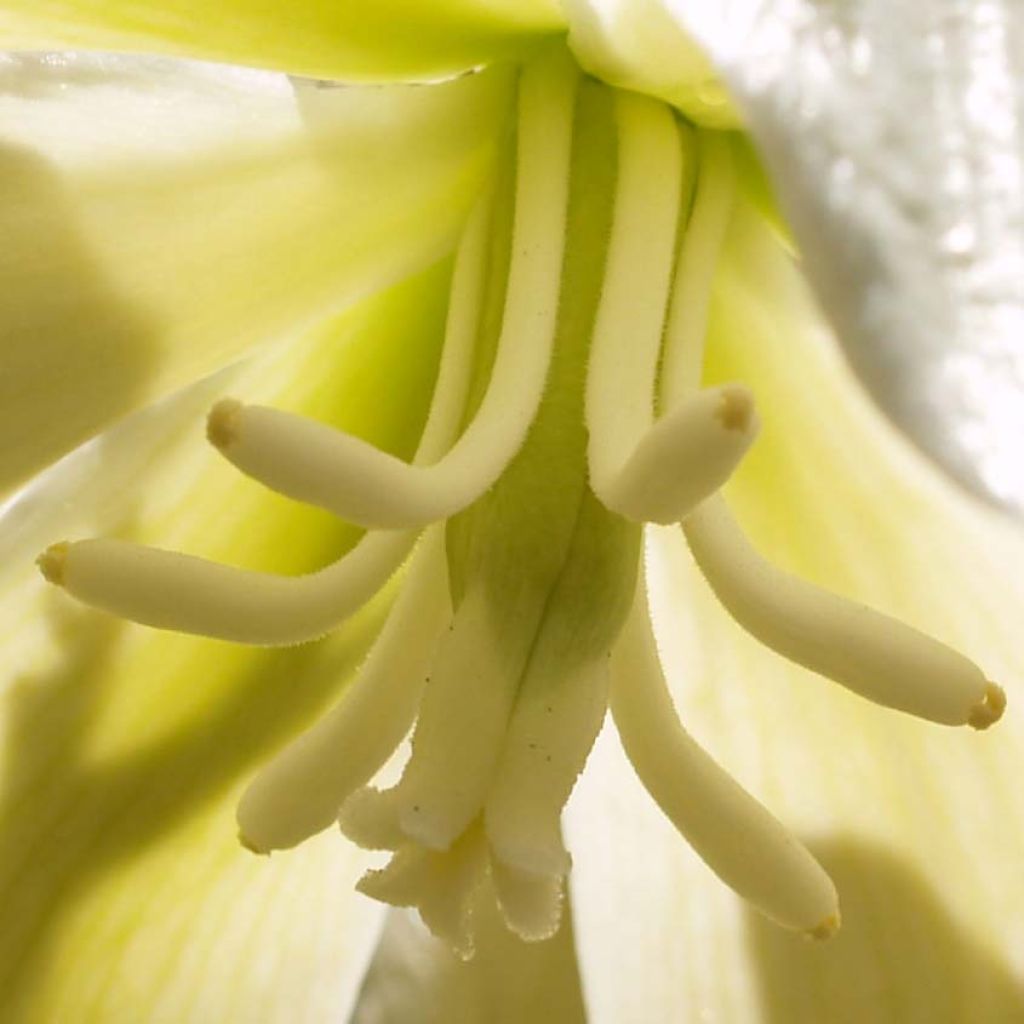

Yucca gloriosa - Spanish Dagger
Yucca gloriosa - Spanish Dagger
Yucca gloriosa
Spanish Dagger, Adam's needle, Lord's candlestick, Glorious Yucca
This item cannot be shipped to the selected country
Delivery charge from €5.90
Delivery charge from €5.90
More information
Schedule delivery date,
and select date in basket
This plant carries a 24 months recovery warranty
More information
We guarantee the quality of our plants for a full growing cycle, and will replace at our expense any plant that fails to recover under normal climatic and planting conditions.
From €5.90 for pickup delivery and €6.90 for home delivery
Express home delivery from €8.90.
From €5.90 for pickup delivery and €6.90 for home delivery
Express home delivery from €8.90.
Does this plant fit my garden?
Set up your Plantfit profile →
Description
Yucca gloriosa, sometimes called Spanish Dagger because of its sword-shaped leaves, is an evergreen bush with slow growth, perfectly adapted to arid conditions, but remarkably tolerant, hardy and strongly imbued with exoticism. At the top of its branches, mature plants bear rosettes of large, stiff and leathery dark green-blue leaves, with pointed and sharp ends. Its summer flowering is spectacular, in the form of a tall stem adorned with numerous bell-shaped white flowers with a pleasant fragrance. It only requires full sun and properly drained soil.
Native to the southeastern United States, growing along the coast and in dune areas, Yucca gloriosa is a rhizomatous plant belonging to the Agave family. When young, Yucca gloriosa forms a shaggy ball, naturally sparsely branched. After many years, it can form a very short trunk with several branches. It can reach 2 m to 3 m (6.6 ft to 9.8 ft) in all directions when flowering. The foliage measures 1 m (3.3 ft), and is arranged in a rosette of long leaves measuring 70 cm (27.6 in) long and 6 cm (2.4 in) wide. They are rigid, gutter-shaped, lanceolate, with a pointed blade shape and have a brown and fierce spine at their ends. Flowering occurs after 3 to 4 years of cultivation, indicating the death of the rosette which will be replaced by another. Very fragrant and nectar-rich, the flowers resemble bell-shaped flowers. They are white to cream-white in colour, sometimes washed with purple, and their reverse side is spotted with deep pink. The flower buds display different shades of deep pink. They are carried in erect and branched panicles over 2 m (6.6 ft) in height.
Yucca gloriosa, hardy to -15° C (5° F) and easy to grow, will thrive in any properly drained soil, even dry and poor soil. It should be kept away from walkways and young children due to its formidable pointed leaves. This large plant is ideal for structuring a large rock garden or for brilliantly occupying the centre of an exotic border. It can be planted alone or associated on a dry slope with Puya caerulea, Agave americana, prickly pear, Dasylirion, and fairly hardy candelabra cacti (Cleistocactus strausii, Cylindropuntia imbricata) and the robust Nolina. It can also be placed in a very large pot on a terrace, next to a banana tree or a palm tree (Tachicarpus fortunei, Brahea armata, Chamaerops humilis). If growing in a container, choose a sheltered spot in full sun, to recreate a garden reminiscent of those that flourish on the other side of the world.
Report an error about the product description
Yucca gloriosa - Spanish Dagger in pictures
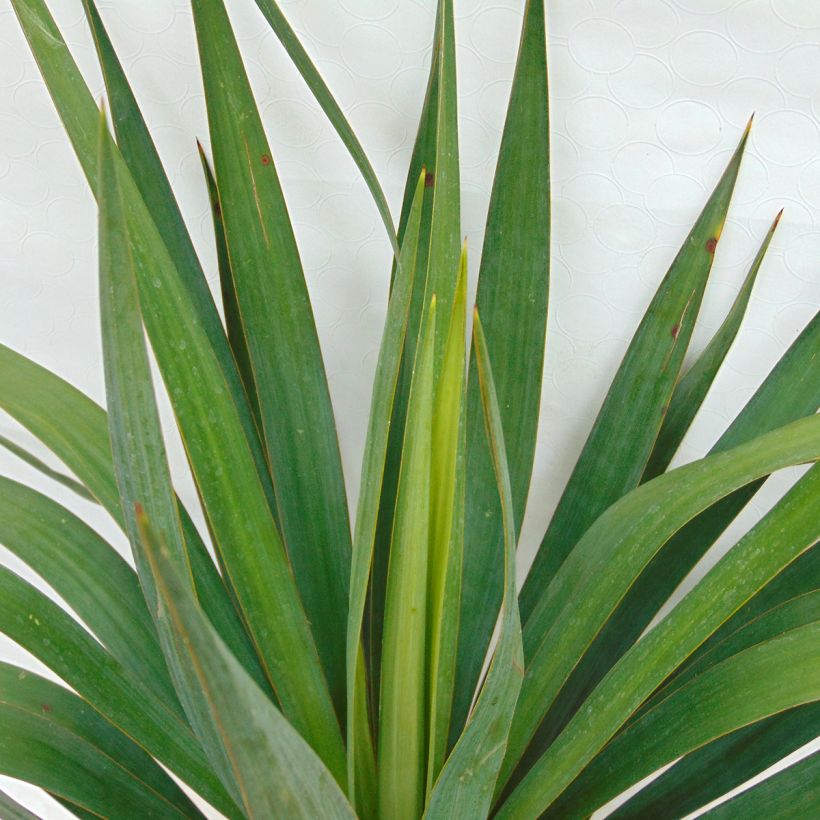

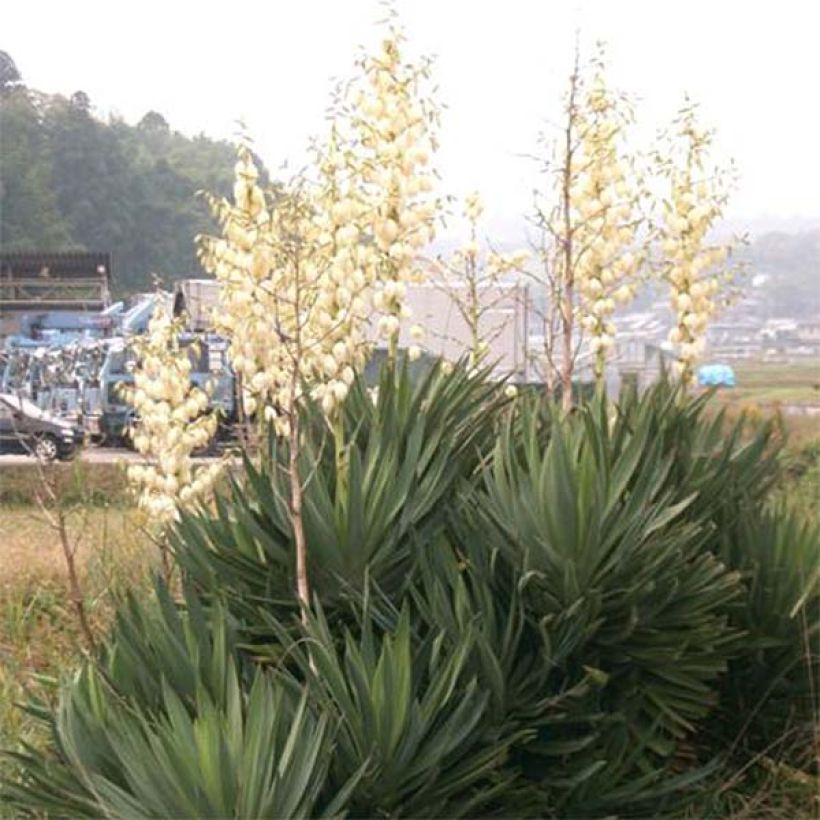

Plant habit
Flowering
Foliage
Botanical data
Yucca
gloriosa
Agavaceae
Spanish Dagger, Adam's needle, Lord's candlestick, Glorious Yucca
North America
Other Yucca
Planting and care
Plant Yucca in spring, in a very sunny and sheltered location. Its growth is quite slow, boosted by generous but spaced waterings in summer and fertile soil. In mild climates, plant in autumn, especially in hot and dry climates. This species dislikes heavy and clayey soils and humidity, especially when combined with cold weather. Plant the young plant in well-drained soil, ideally in a large rockery, a raised bed with gravel-enriched soil, or a rocky slope. On the other hand, it is not very demanding on soil pH, which can be slightly acidic, sandy, rocky, or even slightly chalky. It tolerates poor soil, but its growth will be slightly faster in more fertile soil. Monitor watering during the first 2 years, especially in hot and dry periods. Remove faded stems.
If your Yucca does not flower, it is probably because it's too young, or it has only been planted in your garden for 3 or 4 years. Indeed, it seems that this plant takes time to establish itself and only flowers after 8 years. Then, depending on the sunlight and climate, it will flower every year, or even every two or three years.
Propagation:
Yucca is easily propagated by taking cuttings from the trunk. It should be noted that plants propagated from cuttings produce fewer roots than subjects from seed, making them susceptible to strong winds and less resistant to drought in hot climates.
Fertilisation in yuccas:
In their countries of origin, Yucca flowers are pollinated only by a few species of tiny primitive butterflies without proboscis that live in symbiosis with the plant, such as Prodoxus. The female of these butterflies carries pollen grains from one flower to the pistil of another. She lays a few eggs at the base of the flower. The young caterpillars feed on some of the seeds. Since Prodoxus are native to the United States, most yuccas cultivated in our gardens never produce fruits. Only Yucca aloifolia is capable of doing so, because its pollination does not depend on the presence of these small butterflies.
Planting period
Intended location
Care
-
, onOrder confirmed
Reply from on Promesse de fleurs
Evergreen shrubs
Haven't found what you were looking for?
Hardiness is the lowest winter temperature a plant can endure without suffering serious damage or even dying. However, hardiness is affected by location (a sheltered area, such as a patio), protection (winter cover) and soil type (hardiness is improved by well-drained soil).

Photo Sharing Terms & Conditions
In order to encourage gardeners to interact and share their experiences, Promesse de fleurs offers various media enabling content to be uploaded onto its Site - in particular via the ‘Photo sharing’ module.
The User agrees to refrain from:
- Posting any content that is illegal, prejudicial, insulting, racist, inciteful to hatred, revisionist, contrary to public decency, that infringes on privacy or on the privacy rights of third parties, in particular the publicity rights of persons and goods, intellectual property rights, or the right to privacy.
- Submitting content on behalf of a third party;
- Impersonate the identity of a third party and/or publish any personal information about a third party;
In general, the User undertakes to refrain from any unethical behaviour.
All Content (in particular text, comments, files, images, photos, videos, creative works, etc.), which may be subject to property or intellectual property rights, image or other private rights, shall remain the property of the User, subject to the limited rights granted by the terms of the licence granted by Promesse de fleurs as stated below. Users are at liberty to publish or not to publish such Content on the Site, notably via the ‘Photo Sharing’ facility, and accept that this Content shall be made public and freely accessible, notably on the Internet.
Users further acknowledge, undertake to have ,and guarantee that they hold all necessary rights and permissions to publish such material on the Site, in particular with regard to the legislation in force pertaining to any privacy, property, intellectual property, image, or contractual rights, or rights of any other nature. By publishing such Content on the Site, Users acknowledge accepting full liability as publishers of the Content within the meaning of the law, and grant Promesse de fleurs, free of charge, an inclusive, worldwide licence for the said Content for the entire duration of its publication, including all reproduction, representation, up/downloading, displaying, performing, transmission, and storage rights.
Users also grant permission for their name to be linked to the Content and accept that this link may not always be made available.
By engaging in posting material, Users consent to their Content becoming automatically accessible on the Internet, in particular on other sites and/or blogs and/or web pages of the Promesse de fleurs site, including in particular social pages and the Promesse de fleurs catalogue.
Users may secure the removal of entrusted content free of charge by issuing a simple request via our contact form.
The flowering period indicated on our website applies to countries and regions located in USDA zone 8 (France, the United Kingdom, Ireland, the Netherlands, etc.)
It will vary according to where you live:
- In zones 9 to 10 (Italy, Spain, Greece, etc.), flowering will occur about 2 to 4 weeks earlier.
- In zones 6 to 7 (Germany, Poland, Slovenia, and lower mountainous regions), flowering will be delayed by 2 to 3 weeks.
- In zone 5 (Central Europe, Scandinavia), blooming will be delayed by 3 to 5 weeks.
In temperate climates, pruning of spring-flowering shrubs (forsythia, spireas, etc.) should be done just after flowering.
Pruning of summer-flowering shrubs (Indian Lilac, Perovskia, etc.) can be done in winter or spring.
In cold regions as well as with frost-sensitive plants, avoid pruning too early when severe frosts may still occur.
The planting period indicated on our website applies to countries and regions located in USDA zone 8 (France, United Kingdom, Ireland, Netherlands).
It will vary according to where you live:
- In Mediterranean zones (Marseille, Madrid, Milan, etc.), autumn and winter are the best planting periods.
- In continental zones (Strasbourg, Munich, Vienna, etc.), delay planting by 2 to 3 weeks in spring and bring it forward by 2 to 4 weeks in autumn.
- In mountainous regions (the Alps, Pyrenees, Carpathians, etc.), it is best to plant in late spring (May-June) or late summer (August-September).
The harvesting period indicated on our website applies to countries and regions in USDA zone 8 (France, England, Ireland, the Netherlands).
In colder areas (Scandinavia, Poland, Austria...) fruit and vegetable harvests are likely to be delayed by 3-4 weeks.
In warmer areas (Italy, Spain, Greece, etc.), harvesting will probably take place earlier, depending on weather conditions.
The sowing periods indicated on our website apply to countries and regions within USDA Zone 8 (France, UK, Ireland, Netherlands).
In colder areas (Scandinavia, Poland, Austria...), delay any outdoor sowing by 3-4 weeks, or sow under glass.
In warmer climes (Italy, Spain, Greece, etc.), bring outdoor sowing forward by a few weeks.

































